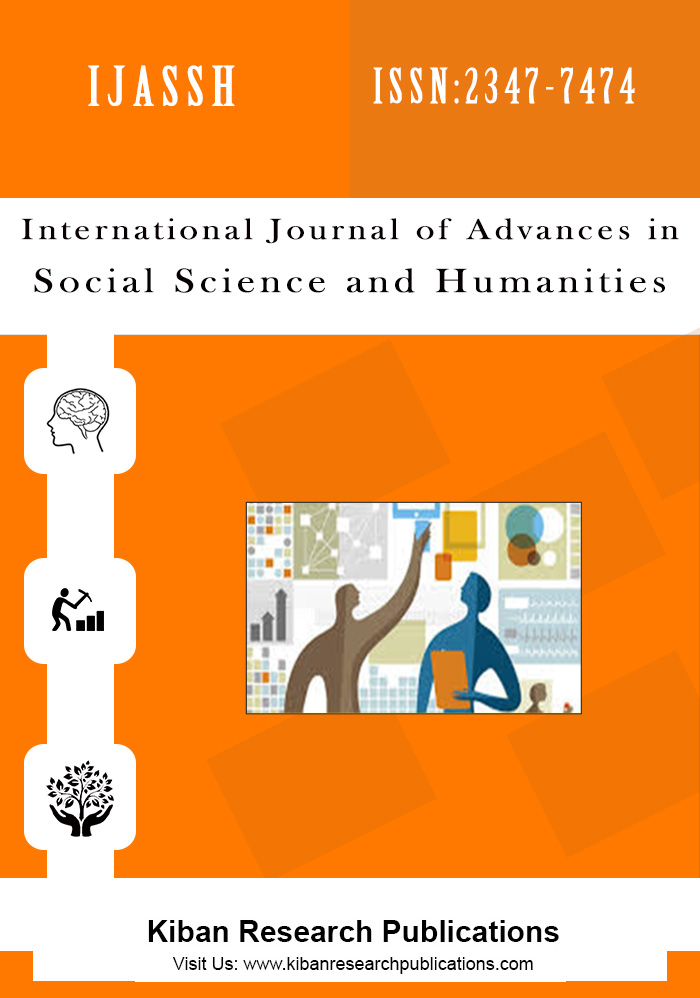Man-Clone Proxemics: Changing Perspectives from Mary Shelley (Frankenstein*) to Kate Wilhelm (Where Late the Sweet Birds Sang**)
Abstract
The present paper addresses a question that was born simultaneously with the emergence of a non-organic factor in the generation and utopian projection of human beings. The organicist view of romanticism perceived the animating effect of Luigi Galvani’s experiment, according to Mary Shelley’s ground-breaking scientific romance Frankenstein (1818), as disquieting as humanist Horatio’s response to Old Hamlet’s ghost in Shakespeare’s 1600 tragedy. Horatio’s qualification of the ghost as “a mole in the eye†renders exactly the sense of an impurity that does not fit among the familiar phenomena of the known world. Mary Shelley too envisioned the role of technology in the future projects of biologically and intellectually enhanced human beings, leaving behind humanistic notions of natura naturans, or projects of improvement of the biological given through education or acculturation creating a second nature. Looking at several rival versions of utopianism, the present paper has opted for the Maturana and Varela model of evolution (“autopoiesisâ€) which biologists the order of artifacts, redefined as a living system growing out of itself and only revealing capacity of evolution through creative and revisionist incorporation of tradition. In light of their theory, an influential book on post human proxemics, such as Kate Wilhelm’s Where Late the Sweet Birds Sang (1974), is a hallmark of postmodern post humanism to the extent that it manages to transform in a significant way its early nineteenth-century precedent – Frankenstein.
References
Hayles N Katherine (2010) “After Shocks: Post human ambivalenceâ€. Post medieval: a Journal of Medieval Cultural Studies, 1:262–271. doi:10.1057/pmed.2010.28.
Maturana Humberto R, Francisco J, Varela (1989) [1972]. Autopoiesis and Cognition. The Realization of the Living. With a preface to ‘Autopoiesis†by Sir Stafford Beer. Dordrecht, Holland: D. Reidel Publishing Company. HRI '11 Proceedings of the 6th international conference on Human-robot interaction. Lausanne, Switzerland — March 06 - 09, 2011. 331-338. Published by ACM New York, NY, USA . doi>10.1145/1957656.1957786. http://webcache.googleusercontent.com/search?q=cache:rZSQ6nVyv1MJ:www.cs.cmu.edu/~illah/CLASSDOCS/p331-mumm.pdf+&cd=2&hl=ro&ct=clnk&gl=ro.
Kuokkanen Petri (2003) Prophets of Decline. The Global Histories of Brooks Adams, Oswald Spengler and Arnold Toynbee in the United States 1896-1961. Academic Dissertation. Acta Universitatis Tamperensis 924. Tampere: University of Tampere. Web: file:///C:/Users/user/AppData/Local/Microsoft/Windows/Temporary%20Internet%20Files/Content.IE5/OOS4ZOK5/951-44-5643-2.pdf.
Penman Jim (2015) Biohistory: Decline and fall of the West. Newcastle upon Tyne: Cambridge Scholars Publishing.
Deleuze Gilles, Felix Guattari (1988) A Thousand Plateaus. Tr. Brian Massumi. Minneapolis: University of Minnesota Press.
Hall Edward T (1966) The Hidden Dimension. Garden City, N.Y.: Doubleday.
Mumm Jonathan, Bilge Mutlu (2011) “Human-Robot Proxemics: Physical and Psychological Distancing in Human-Robot Interactionâ€.




